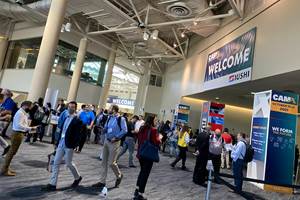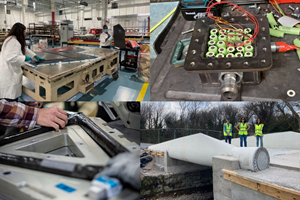Addressing workforce challenges in the composites industry
Baby Boomers, workforce development and automation.
It’s almost impossible to travel anywhere within the world of composites these days without confronting the topics of employment, training, employee retention or automation. At trade shows, conferences and plant visits, there has been (for several years now) ongoing discussion about how to find and retain employees who either know and understand composite materials or demonstrate a willingness and aptitude to learn about them. This challenge is made all the more urgent by three complicating factors. First, Baby Boomers. The Baby Boomer generation, which includes anyone born between 1946 and 1964, is rapidly retiring from the workforce. In the US, they leave at the rate of about 10,000 per day, according to the US Social Security Admin. Baby Boomers represent the foundation of the modern composites industry, and with their departure goes not just the ability to do a job but, perhaps more importantly, the accumulated intellectual capital and experience that is extremely difficult — if not impossible — to replace.
Second, young people entering the workforce are not naturally drawn to composites manufacturing. As important as composites are to us, they represent a fraction of the overall global manufacturing economy. Drawing young people to composites requires outreach and marketing that we are unused to doing. That said, there are many universities and community colleges that teach about composites and produce technicians and engineers who understand the materials, but demand still far outweighs supply.
Third, employees, in general, are just difficult to find. In the United States, the unemployment rate has dropped to 4.3%, which represents, theoretically, “full employment.” In my home state of Colorado, the rate has dropped to an all-time low of 2.3%, and it’s rare, here, to see a retailer who does not have a “help wanted” sign posted on its door. In the 29 countries of the EU, the unemployment rate is higher, hovering around 8%, so ostensibly the supply of workers there is not as tight.
Against the backdrop of these workforce concerns, automation presents itself as an ideal solution, yet it also presents its own set of challenges.
To be sure, automation could solve a couple of major problems we face. First, it would enable us to move away from the touch labor required for hand layup of prepreg materials. This is easier said than done, because the dexterity and utility of the human hand is difficult to duplicate in an automated solution. But humans are also notoriously inconsistent and prone to error, so the business case for driving touch labor out of composites manufacturing is strong.
Second, and directly related to the first, automation can bring to many composites fabrication processes a level of repeatability, and cycle time and process control that could put the composites manufacturing industry on par with more established manufacturing processes and materials, such as CNC machining or plastic injection molding. In this way, composites manufacturing might become more “standardized” and less of an outlier in the broader manufacturing world. (And yes, I use the word “standardized” with some hesitation because I know some of us don’t like to think that composites manufacturing might one day be commoditized.)
Third, automation is, in fact, already happening. Despite the technical challenges, a number of enterprising machinery suppliers are already offering, for example, production-line-worthy automated preforming processes (see “Preforming goes industrial”).
Automation’s principal problem, of course, is that it displaces humans in the workforce. Indeed, with little effort, one can find online a variety of dark predictions about the pervasive and insidious nature of automation throughout society — not just manufacturing — which might lead you to thoughts of The Terminator. The more optimistic among us, however, believe that automation will stimulate new opportunities for human work and endeavor that are nearly impossible for us to predict or anticipate. Time will tell.
In the meantime, I am eager to see how the composites industry addresses its workforce challenges, and we’ll do our best to keep you up to speed.
Related Content
CAMX 2022: 10 reasons to attend
Looking for a good reason to attend CAMX 2022? Look no further.
Read MoreCompositesWorld is on the road again
Since CW’s infancy, its editors have strived to imbue its coverage with a sense of place, whether that’s through plant tours, facility visits or trade shows. After a pandemic, this has never seemed more important.
Read MoreRemembering Don Adams
When one thinks of composites test methods, one thinks of Don Adams. Don passed away at the end of 2022. We remember him here.
Read MoreAs 2023 begins, a look back at trending CW topics in 2022
With 2022 now behind us, CW’s editor-in-chief Jeff Sloan takes a look at the CW stories last year that received the most reader attention.
Read MoreRead Next
Composites end markets: Energy (2024)
Composites are used widely in oil/gas, wind and other renewable energy applications. Despite market challenges, growth potential and innovation for composites continue.
Read MoreCW’s 2024 Top Shops survey offers new approach to benchmarking
Respondents that complete the survey by April 30, 2024, have the chance to be recognized as an honoree.
Read MoreFrom the CW Archives: The tale of the thermoplastic cryotank
In 2006, guest columnist Bob Hartunian related the story of his efforts two decades prior, while at McDonnell Douglas, to develop a thermoplastic composite crytank for hydrogen storage. He learned a lot of lessons.
Read More














.jpg;maxWidth=300;quality=90)










